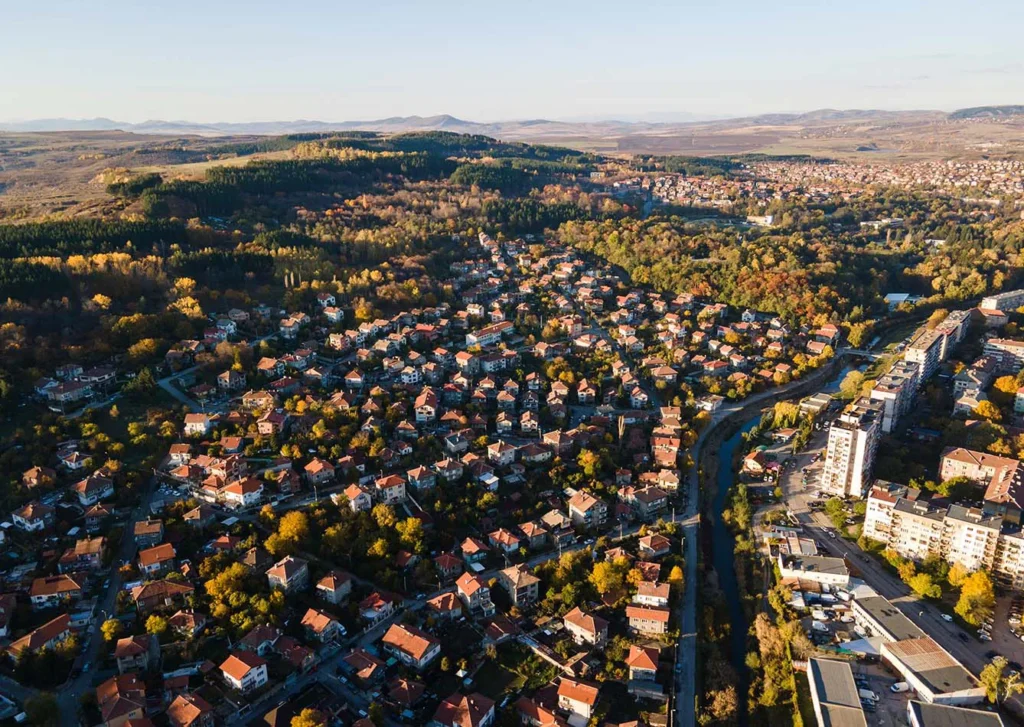
Republic of Bulgaria:
The Republic of Bulgaria is a country in Southeast Europe. It is situated on the eastern flank of the Balkans, and is bordered by Romania to the North, Serbia and North Macedonia to the West, Greece and Turkey to the South, and the Black Sea to the East. Bulgaria covers a territory of 110,994 square kilometers (42,855 sq. mi), and is the sixteenth largest country in Europe. Sofia is the nation’s capital and largest city; other major cities are Plovdiv, Varna, Dobrich and Burgas.
Dobrich:

Dobrich is the 9th most populated city in Bulgaria. It is the administrative center of Dobrich Province and the capital of the region of Southern Dobrudzha. It is located in the northeastern part of the country, 30 km west of the Bulgarian Black Sea Coast, not far from resorts such as Albena, Balchik, and Golden Sands. The Dobrich is inhabited by about 91,000 people within the city limits. The city is named after the Bulgarian medieval lord of the surrounding region – Dobrotitsa.
Today Dobrich is a modern industrial, agricultural, and transport center of the Dobrudzha region, one of the ten largest cities in Bulgaria – an important cultural, economic and administrative center in the northeastern economic region of the country.
The economic profile of Dobrich is determined by the food industry, which provides over 50% of the volume of urban industry, as well as light industry. The rich agricultural area provides valuable raw materials.
Apart from being the center of a large agricultural region, the municipality of Dobrich has a well-formed industrial complex. The city has developed the branches of the food industry / production of dairy products, sausages, pasta, wines and spirits, soft drinks; poultry meat products, flour, bread and confectionery, light industry production of men’s and women’s clothing, leather clothing, furniture, footwear, mechanical engineering, production of batteries, machinery and equipment for milk processing, semi-trailers and containers, agricultural machinery, radiators and filters for cars and trucks, plastic products, construction of buildings and facilities, design, civil and industrial construction.
A significant share of the city’s economy is occupied by light industry with the production of men’s and women’s clothing, furniture, fabrics, leather, and jacquard products.
Varna:

arna, the third-largest city in Bulgaria, is a prominent seaport situated on the northern shore of Varna Bay along the Black Sea coast. Protected by the Dobrudzhansko plateau, which reaches an elevation of over 1,000 feet (300 meters) above sea level, the city is connected to the Black Sea by a narrow canal established in 1907, linking Varna Lake to the Provadiyska River. This city holds significant importance as an administrative, economic, cultural, and resort hub, boasting modern infrastructure such as broad tree-lined boulevards, a scenic waterfront park, and expansive beaches. To the north of Varna, several well-known resort towns, including Druzhba, Zlatni Pyassŭtsi (“Golden Sands”), Albena, and Balchik, dot the coastline. Balchik, in particular, served as the summer retreat for Romanian royalty and aristocracy in the past.
Varna, originally christened Odessus by Milesian Greeks in the 6th century BCE, narrates a storied past under Thracian, Macedonian, and Roman dominion. Adopting the name Varna, it integrated into the First Bulgarian Empire in 681 CE. Flourishing as a trade nexus during the reign of Ivan Asen II in 1218, the city cultivated ties with Genoa, Venice, and Dubrovnik. Despite Ottoman annexation in 1391, Varna’s prominence persisted. A turning point occurred in 1444 when the city bore witness to the decisive Battle of Varna, where Ottoman forces triumphed over the final Christian Crusade against the Turks in the Balkans.
The 19th century unfolded a tapestry of transitions for Varna, marked by Russian occupation in 1828 and subsequent return to Ottoman control. Its strategic role materialized during the Crimean War in 1854, serving as a base for Anglo-French troops in the campaign against Sevastopol. Liberated from Ottoman dominion in 1878 through the Treaty of Berlin, Varna’s expansion was propelled by the inauguration of the Ruse-Varna railway in 1866 and the rail link to Sofia in 1899. A modern harbor emerged in 1906.
Varna’s influence extends to transportation, featuring regular domestic air services and heightened international flights in the summer. Its harbor facilitates a significant portion of Bulgaria’s maritime and river transit, welcoming vessels of up to 20,000 tons. Primary exports include livestock, grain, and processed edibles. Flour milling, boat construction, and manufacturing sectors further enrich Varna’s economic tapestry. Additionally, Varna stands as a pivotal coastal retreat.
Pernik:
Amidst the topography of west-central Bulgaria, nestled along the meanders of the Struma River, lies the town of Pernik, a locale etched in historical significance. Approximately 19 miles (31 km) southwest of Sofia, Pernik once stood as a formidable Bulgarian fortress, successfully thwarting Byzantine military incursions during the nascent years of the 11th century. However, the course of its narrative saw a shift, enduring the dominion of Turkish rule from 1396 to 1878, spanning five centuries.

The annals of 1891 heralded a transformative era for Pernik, as the locality witnessed a burgeoning wave of industrialization, fueled by the extraction of copious coal deposits strewn across its precincts. This metamorphosis propelled Pernik into the echelons of Bulgaria’s industrial forefront. Beyond its industrial prowess, Pernik unfolds as a nexus of cultural dynamism, acknowledged as a pinnacle within the nation’s cultural landscape. Furthermore, it hosts a venerable mining institution, an expansive sports complex embellished with a stadium, a national theatre, a symphony orchestra, a repository of historical artifacts, and an enchanting verdant expanse. As of the census in 2004, the populace of Pernik stood at an approximate 81,674 souls.
Education:
The activities of the Department of “Education and Culture” in education are conducted in accordance with the requirements of the Education Act, the regulations implementing the Education Act, and are consistent with the Educational Policy of Dobrich Municipality. Educational policy in general considers socio-economic characteristics of modern society as well as prospects for future development to respond to the new global challenges and opportunities adequately.
